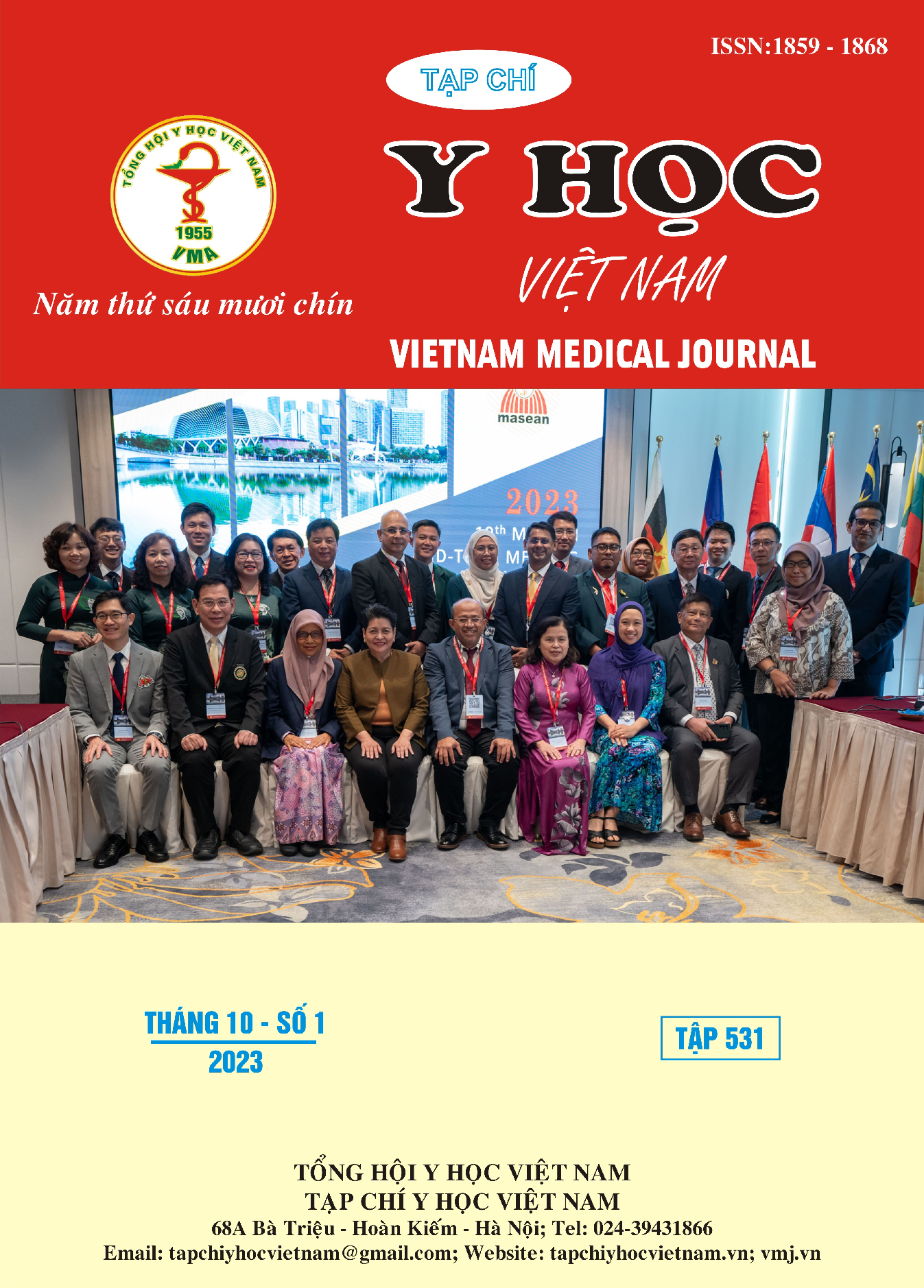EFFECTIVENESS OF TOPICAL 5% CYSTEAMINE HYDROCHLORIDE IN MELASMA IN UNIVERSITY MEDICAL CENTER AT HO CHI MINH CITY
Main Article Content
Abstract
Objectives: To evaluate the clinical efficacy of topical 5% cysteamine hydrochloride in melasma in University Medical Center at Ho Chi Minh city. Material and methods: A descriptive study of a series of cases, longitudinal follow-up was conducted on 32 patients with melasma and indicated treatment with topical 5% cysteamine hydrochloride at Department of Dermatology and Skin Aesthetics – University Medical Center at Ho Chi Minh city from 8/2021 to 8/2023. Results: Among 32 patients in this research, all of them were female and the mean age was 43,9 ± 9,3. Fitzpatrick skin types were mostly type IV (71,9%) and type III (28,1%). Stratification of patients regarding severity led to 28,1% in the mild subgroup, 8% in the moderate subgroup, 18,8% in the severe subgroup and 28,1% in the very severe subgroup. After treatment with topical 5% cysteamine hydrochloride, 87,5% of patients reported satisfied or very satisfied with the results. mMASI improved after 1, 2 and 3 months (P = 0,06, 0,04 and 0,02, respectively). Skin analysis score using VISIA and Colorimeter also showed significant improvements. Changes of MELASQoL after 1, 2 and 3 months of treatment also reached statistical difference. About the safety of the method, “No abnormality” was the most common feedback from patients and doctors. Conclusion: Topical 5% cysteamine hydrochloride is an effective and safe method in the treatment of melasma.
Article Details
Keywords
cysteamine hydrochloride, melasma
References
2. Atallah C, Viennet C, Robin S, Ibazizen S, Greige-Gerges H, Charcosset CJEJoPS. Effect of cysteamine hydrochloride-loaded liposomes on skin depigmenting and penetration. 2022; 168:106082.
3. Choi YJ, Nam JH, Kim JY, et al. Efficacy and safety of a novel picosecond laser using combination of 1 064 and 595 nm on patients with melasma: a prospective, randomized, multicenter, split‐face, 2% hydroquinone cream‐ controlled clinical trial. 2017;49(10):899-907.
4. Karrabi M, Mansournia MA, Sharestanaki E, Abdollahnejad Y, Sahebkar MJAoDR. Clinical evaluation of efficacy and tolerability of cysteamine 5% cream in comparison with tranexamic acid mesotherapy in subjects with melasma: a single-blind, randomized clinical trial study. 2021;313:539-547.
5. Liang S, Shang S, Zhang W, et al. Comparison of the efficacy and safety of picosecond Nd: YAG laser (1,064 nm), picosecond alexandrite laser (755 nm) and 2% hydroquinone cream in the treatment of melasma: A randomized, controlled, assessor-blinded trial. 2023;10:1132823.
6. Mansouri P, Farshi S, Hashemi Z, Kasraee BJBJoD. Evaluation of the efficacy of cysteamine 5% cream in the treatment of epidermal melasma: a randomized double‐blind placebo‐ controlled trial. 2015;173(1):209-217.
7. Sheth VM, Pandya AGJJotAAoD. Melasma: a comprehensive update: part II. 2011;65(4):699-714.
8. Lima PB, Dias JAF, Cassiano D, et al. A comparative study of topical 5% cysteamine versus 4% hydroquinone in the treatment of facial melasma in women. 2020;59(12):1531-1536.


